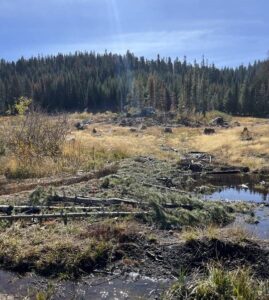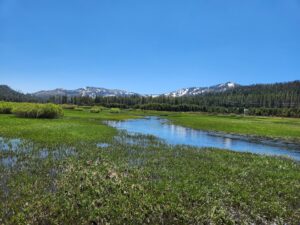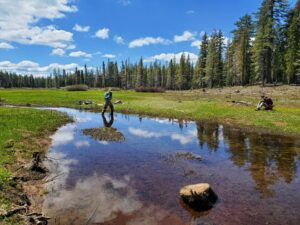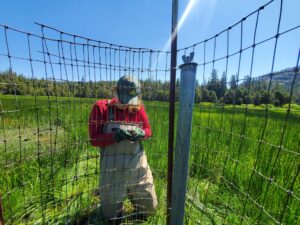Restoration Project Update: The Haskell Peak Meadows
The Haskell Peak Meadows Restoration Project aims to rehabilitate the meadow hydrology in five meadows, thereby restoring ecosystem function and increasing resilience in each of these meadows to expected changes in climatic conditions.
Meadows provide benefits that make them biodiversity and carbon sequestration hotspots, provide late season baseflows (the portion of the streamflow that is sustained between precipitation events), refugia habitat, and improve water quality and quantity for downstream users. Restoration of meadow hydrology, by re-connecting the stream channel to its natural floodplain, is the primary basis upon which other ecological values are sustained, including restoring historic riparian wet meadow, aquatic habitat, and wetland function, within the meadow system.




